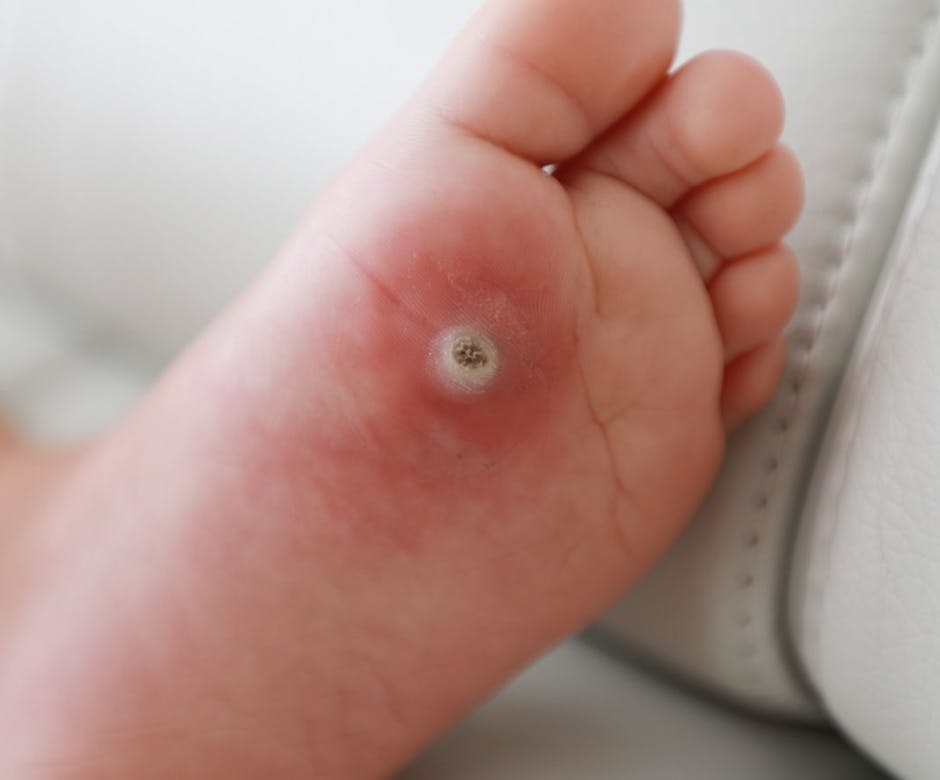Warts vs Corns! What's the difference and how to get rid of them

While both warts and corns can be very similar in appearance… In Fact, so similar that on numerous occasions we have seen this mix up between both patients AND other health practitioners. This mix-up causes the wrong diagnosis and therefore also the wrong treatment plan, therefore resulting in an unsuccessful treatment.
Both warts and corns can (and typically do) have overlying callus. In order to make a confident diagnosis, this first must be removed. Once the callus is painlessly debrided, we are then able to examine the features of the lesion, and come up with a final diagnosis.
Warts aka Verruca Pedis
Verruca, commonly known as plantar warts are a viral infection, and are highly contagious. These usually occur after exposure via swimming pools, gym showers or other communal areas. Children are more likely to get plantar warts!
Warts are living tissue and therefore have their own nerve and blood supply. After debriding the callus on top of a wart, usually you will be able to see:
- Small black dots (dried blood from the warts blood supply)
- Rough “cauliflower” shaped appearance
- Pain when squeezing the wart from size to side
- Skin likes going AROUND the wart
Corns aka Heloma Durum
Corns are caused by pressure and friction on a specific area over time. These are not living and therefore can be “cut-out” without any major pain or bleeding. Once the callus on top of the corn is removed, you will be able to see:
- A circular, flat surface
- Pain upon direct pressure (rather than squeezing it from side to side)
- Skin lines going through the corn rather than around it
How do I get rid of them?
Overall, corns are relatively easy for us to remove and can give you almost instant relief the second you put your feet on the floor.
Warts on the other hand are much harder and take a lot longer to go away. Due to warts being living tissues, success of the treatment will also depend on your immune system.
We recommend coming in to see us to assess the wart and develop a treatment plan. This will usually consist of reducing excess callus formation over the top of the wart and applying an acid to help get rid of the wart. This process is usually not painful.We will also aim to promote an inflammatory response to encourage your immune system to fight the virus.
It is very important that you have the right diagnosis before treating either of these lesions as when you apply acid onto the skin, the acid cannot recognise which tissue is healthy and which is not… therefore if it gets on the healthy skin, you may experience a lot of pain, redness, and discomfort when walking!